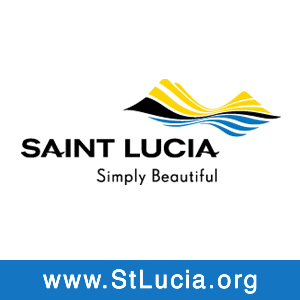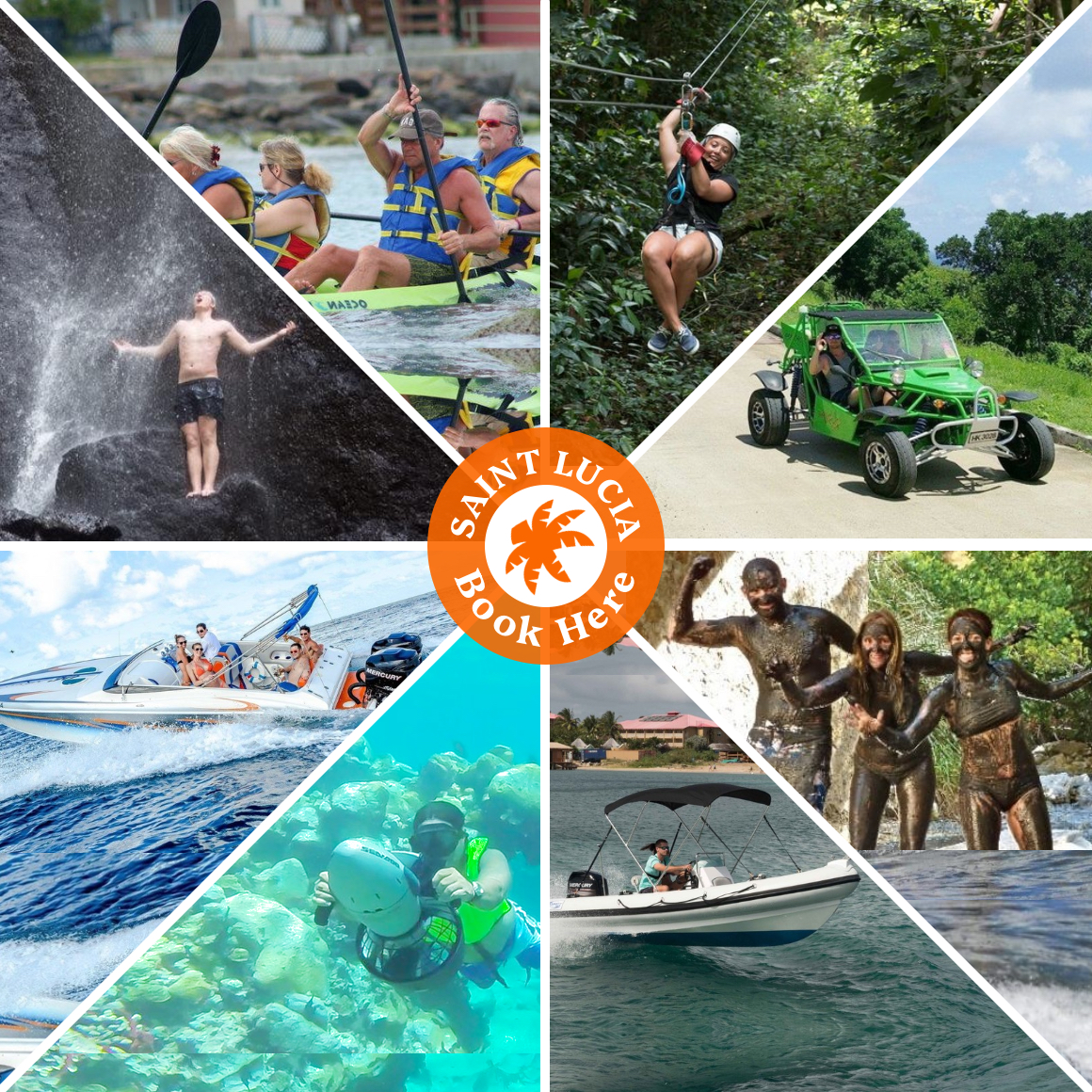St. Lucia is a Sovereign Island Country part of the Lesser Antilles in the eastern Caribbean Sea.
St. Lucia is located north/northeast of the island of Saint Vincent, northwest of Barbados and south of Martinique. View Map. St. Lucia is famous for its volcanic Pitons, national bird the parrot, rainforest, golden beaches, haut cuisine, snorkeling and kitesurfing.
1. Pitons:
St. Lucia is famous for its twin volcanic peaks called the Pitons. These iconic landmarks are a UNESCO World Heritage site and are a prominent feature of the island's southwest coast.
2. Sulfur Springs:
The world's only drive-in volcano, Sulphur Springs, is located in St. Lucia. Visitors can witness bubbling mud pools and steaming vents, where you can even take a mud bath believed to have therapeutic properties.
3. Chocolate Heritage:
St. Lucia has a rich chocolate heritage. It is home to several cocoa plantations and produces high-quality chocolate. Many resorts and tours offer visitors a chance to learn about the chocolate-making process and indulge in tastings.
4. Jazz Festival:
The St. Lucia Jazz Festival is a major event held annually in May. It attracts renowned musicians and jazz enthusiasts from around the world, showcasing local talent alongside international artists in a spectacular Caribbean setting.
5. Pigeon Island:
Connected to the mainland by a causeway, Pigeon Island is a historic site that was once a pirate hideout. Today, it offers hiking trails, stunning views, and the opportunity to explore old military buildings and ruins dating back to the 18th century.
Enjoy your stay!

"Sons and Daughters of St. Lucia"
- "Di ola di moon di brighta di shine".
Age brings wisdom. - "A crab never forget he hole".
There's no place like home. - "All fish does bite but shark does get di blame".
Those with a history of bad behaviour are always the first ones accused.
- The twin pitons (Gros Piton and Petit Piton) - striking cone shaped peaks rising from the ocean.
- Drive-in volcano, the only one in the world. Take a therapeutic mud bath in volcanic ash.
- Zip-lining. Very lush, green jungles of St Lucia hosts fun zip-line locations and monkeys and birds to view.
- Cocoa plantation farms visit one and learn and taste where chocolate really comes from.
- Beautiful beaches and palm trees against the calm Caribbean sea. Lots of water sports and turtle watching (Grande Anse beach) also on the island.
- Reduit Beach
This beach has five miles of white sand on Rodney Bay. Reduit is the place for a long stroll by the shore and a swim in calm waters. One of the most popular beaches on the island, it is decorated by the Rex St. Lucian, Papillon and the Royal St. Lucian hotels and hosts lots of restaurants and vendors renting water-sport equipment and lounge chairs. - Jalousie Beach
A stunning setting between the twin Gros and Petit Piton volcanic peaks, plus white sand and clear water make this beach south of Soufrière a favorite spot for tanning. Snorkelers and scuba divers turn out for the adventures to be had at the 1,800-foot drop-off at the base of the Pitons. - Anse Chastanet
A fav for divers and snorkelers because of the sharp drop-off, coral reefs, sea walls and opportunity to view the colorful ocean life without having to visit deeper waters by boat. The natural sand proves the volcanic origins of the island. - Pigeon Island National Park
On the north end of the island, this beach is tranquil and less busy. Tanning, swimming, lunch at either of two bistros, a visit to a mini-museum and a climb to a vantage point for views of the historic Fort Rodney ruins and the distant Martinique could make your adventure here. - Grande Anse
Lovely beach north of Dennery, part of a new national park, a mile long and set against cliffs in an area that was once a plantation. This is the location for turtle watching of endangered leatherbacks, the largest of sea turtles, heaving themselves out of the water and onto the beach to lay their eggs.
Being one of the most mountainous, and like many Caribbean islands it is also volcanic, but this one boasts a drive-in volcano. The highest point is Mount Gimie at 950 metres (3120 ft) above sea level. But the island's most famos landmarks are two other mountains, the Pitons.
The first European camp on the volcanic island of Saint Lucia was started in the beginning of 1600s by the Dutch, at what is now Vieux Fort. In 1605, the English ship, the Olive Branch, was blown off-course on its way to Guyama and started a settlement on Saint Lucia. Shortly after they fled due to diseases and conflict with the Caribs. The French claimed the island in 1635, but the Enlish started the the next European settlement in 1639. In 1643 a French expedition established a permanent settlement on the island and began to develop the land for the cultivation fo sugar cane. After the Seven Years' War ended between Great Brittain and the France-Spanish coalition the Treaty of Paris on 10 February 1763 confirmed an exchange of colonial territories.
In 1664 the governor of St Kitts' son claimed Saint Lucia for England. In 1666 the French resumed control of the island.
In 1795 an army of Saint Lucian freedom fighters led by Victor Hugues defeated a battalion of British troops and thereafter a united front of freed slaves and freedom fighters known asthe Brigands forced out out the British army and every white slave-owner from the island. Many battles insued until it joined the West Indies Federation when the colony was dissolved. In 1967 Saint Lucia became one of the six members of the West Indies Associated States, with internal self-government. In 1979 it gained full independence.
Look out when buying bananas in grocery stores or food stalls in the Caribbean - you may actually bite into one and realize it's actually a plantain! Plantains are much better-tasting when cooked, fried or roasted!















